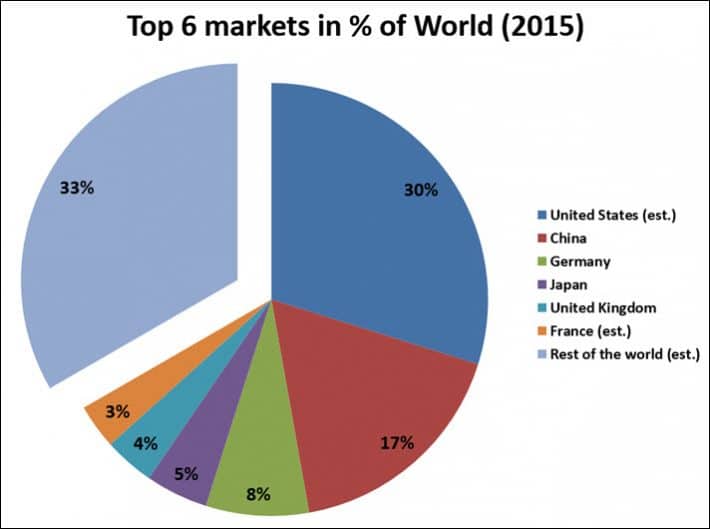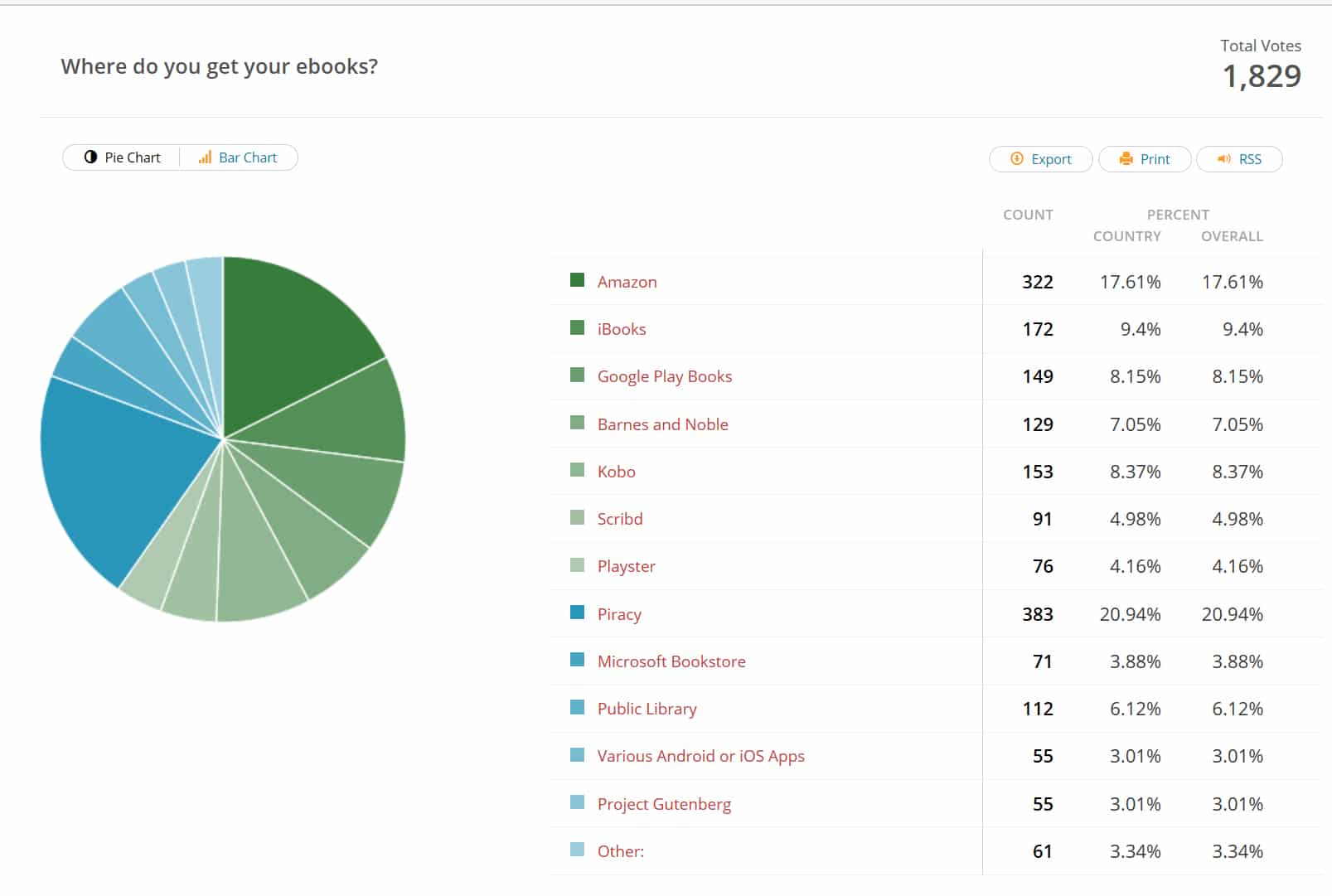Pirate websites received 300 billion visitors last year and ebooks represent a small, but growing segment. Digimarc and Nielsen conducted a recent study that reveals 41% of all adult e-book pirates are aged between 18 and 29 but perhaps surprisingly, 47% fall into the 30 to 44-year-old bracket. The remaining 13% are aged 45 or up. There are also some surprises when it comes to pirates’ income. Cost is often cited as a factor when justifying downloading for free, and this study counters that the average household income that downloads books the most range from $60,000 and $99,000.
Ebook piracy is not just popular in the United States, but is a global problem. According to the Intellectual Property Office’s latest study of online copyright infringement, 17% of ebooks read online in the UK are pirated – around 4m books. According to research by Dutch firm GfK, only 10% of all German ebooks on devices were actually paid for, with most of the digital books being pirated. On average, an e-reader in the Netherlands holds on average 117 ebooks. Out of that total, 11 were bought at legitimate websites. The remaining books were pirated at file-sharing sites or through Torrent sites. 92% of ebook readers in Russia obtained their books illegally downloading the materials.
Ebook piracy is “a very significant issue and of great concern” to publishers, said Stephen Lotinga of the Publishers Association, which works to take down and block pirated ebooks links and sites. “As an industry we’ve not had the situation that the music and film industries have gone through,” Lotinga said. “But that obviously is 4m books that authors and publishers aren’t getting paid for, and should be getting paid for, and it’s a particular worry for publishers at a time when ebook sales are slightly in decline.”
One of the most blithe responses to ebook piracy has been that of Hugh Howey, who once jokingly quipped at an Amazon roundtable event at BookExpo America that he “loves” piracy. Of course, he wasn’t actually supporting the notion of stealing from authors, but rather suggesting that authors look for the good in what is an otherwise unstoppable evil. Howey went on to describe readers who’ve left good reviews of his books after stealing pirated copies, who’ve sent him PayPal and Starbucks gift cards after enjoying them so thoroughly, and more.
A recent Good e-Reader poll asked 1,800 readers where they got their ebooks and 20.94% responded they only pirate them, which is an increase of 12% from the study conducted last year. People who legitimately purchase their Books from Amazon represented 17.61% of the vote, followed by Kobo at 8.37% and B&N 9.4%.
It is easy for ebook pirates to purchase a retail copy and use programs such as Calibre to strip the Adobe DRM and make it available on Torrent sites, forums or even underground subscription services that have fully functional Android apps to read the content or sophisticated web based readers.
Digital Watermarks were developed a few years ago that was supposed to cut down on piracy. They are popular in Europe because readers want to easily sideload their purchased ebooks on their smartphone or tablet and not have to worry about Adobe Digital Editions not supporting their device.
There are a few major players in the Watermarking arena that have gained the most traction from publishers and have been adopted by some fairly big companies. The Dutch firm Booxtream has been providing social DRM since 2011 to its roster of Dutch bookstores and has recently spread their wings globally. One of their biggest clients is Pottermore. JK Rowling’s Harry Potter focused online community and ebookstore. They have been using the technology since the service first launched in 2012. HarperColllins and ebook distributor LibreDigital decided to embrace a competitor; Guardian Watermarking for Publishing from Digimarc. It is a fairly new anti-piracy technology that not only embeds an invisible watermark into eBooks, but it also crawls the web 24×7 searching for watermarked content. When a watermark is detected, Digimarc provides the unique identifier to the publisher to match against its own transaction records. Digimarc Guardian Watermarks do not contain any personal or user information; the Digimarc Watermarks contain only anonymous digital IDs.
Research on the impact of piracy mitigation techniques such as watermarking is virtually nonexistent, so nobody is sure that it even works. The only decent study I know of is the one that Prof. Imke Reimers of Northeastern University published last year using data from Rosetta Books and Digimarc. That was a peer-reviewed study published in a prestigious academic journal, the Journal of Law and Economics. She presented her paper at [Rosenblatt’s] copyright and technology conference this past January. The study showed a 14% increase in e-book sales with certain anti piracy measures in place. But it didn’t cover watermarking; it covered searching for unauthorized copies of e-books on the Internet based on metadata, such as filenames and book titles.
One of the big reasons why ebook piracy is increasing is due to the sheer amount of books being published every year. They generate hundreds of millions of dollars in the United States and not everyone can afford to buy the book. The average price of an ebook title went from $9.99 for a new bestseller to over $17. Some people can afford to pay these prices, but pirate them anyways. There is no stopping piracy, as soon as countermeasures are deployed, people will circumvent them. The only uncrackable ebook format is from Amazon. They make it impossible to read your books in any other reader (and this includes free books that previously had no DRM, such as those out of copyright). It is called KFX —which nothing else can read or convert right now.
Michael Kozlowski is the editor-in-chief at Good e-Reader and has written about audiobooks and e-readers for the past fifteen years. Newspapers and websites such as the CBC, CNET, Engadget, Huffington Post and the New York Times have picked up his articles. He Lives in Vancouver, British Columbia, Canada.



